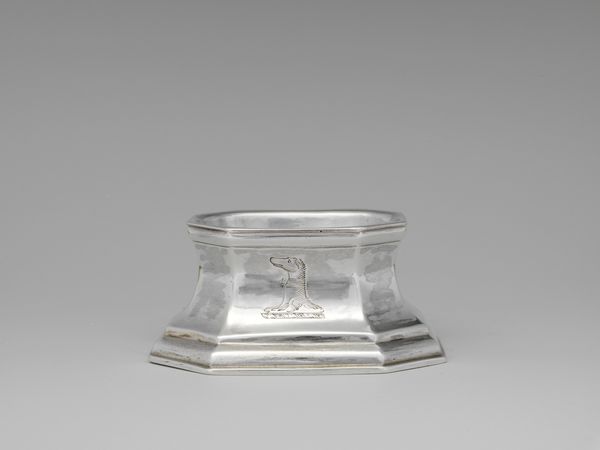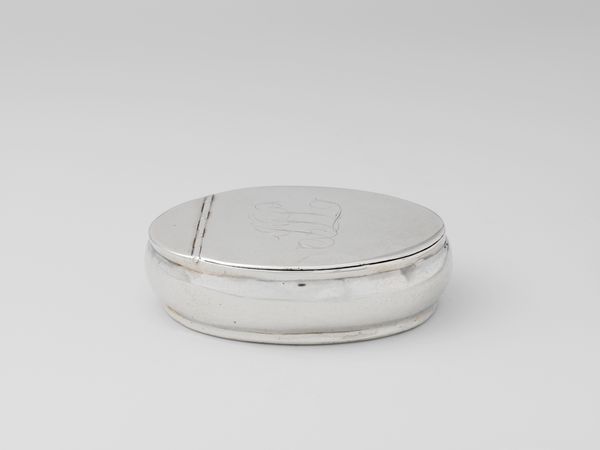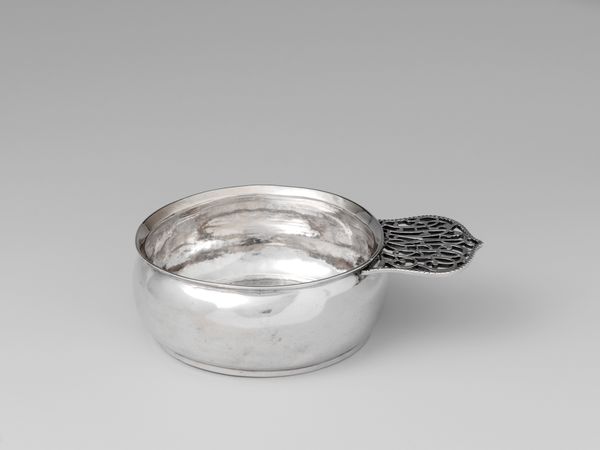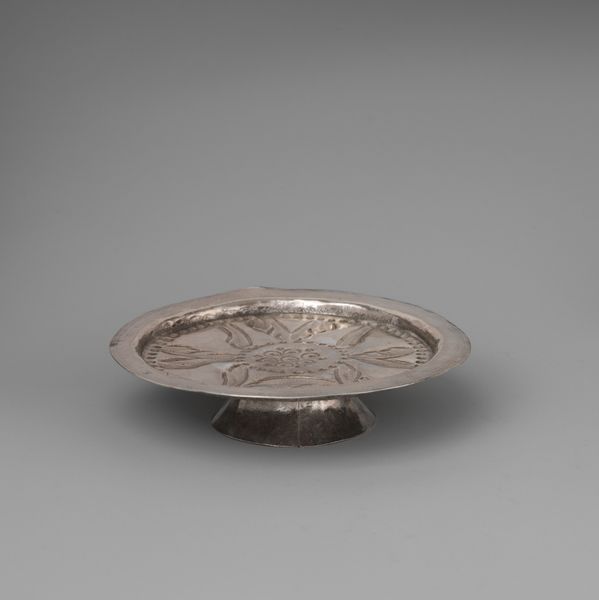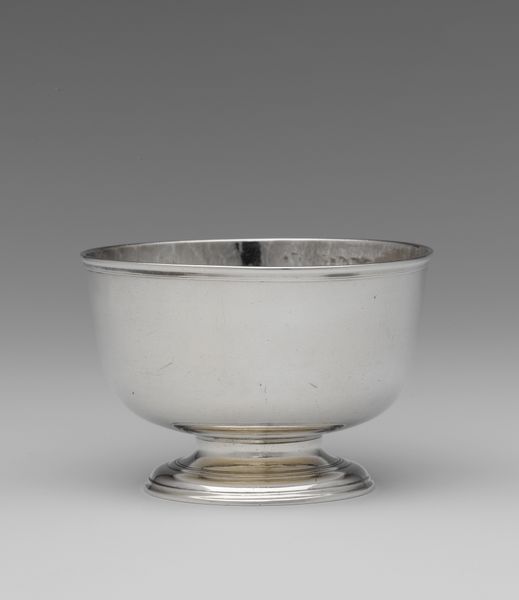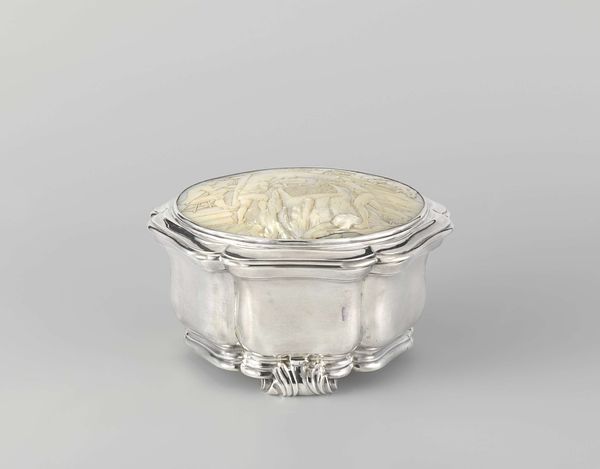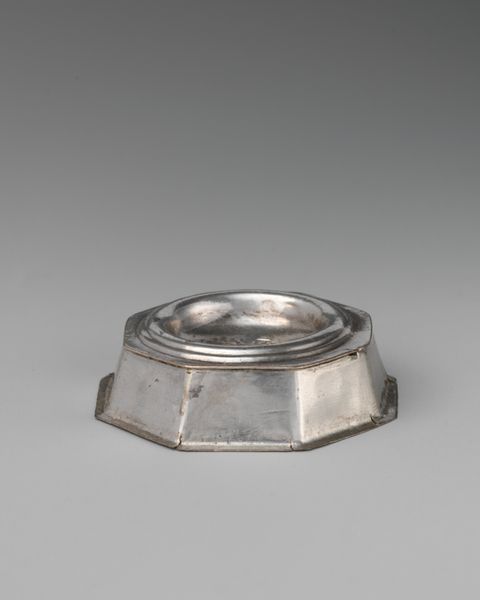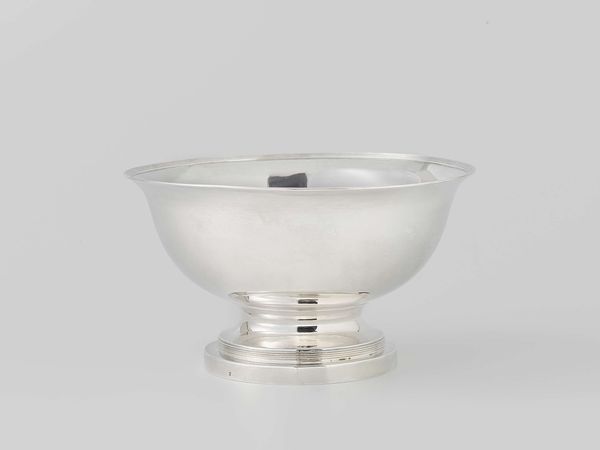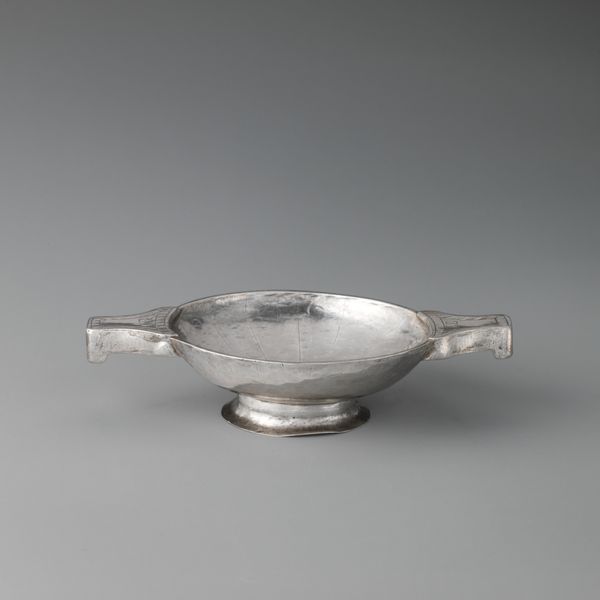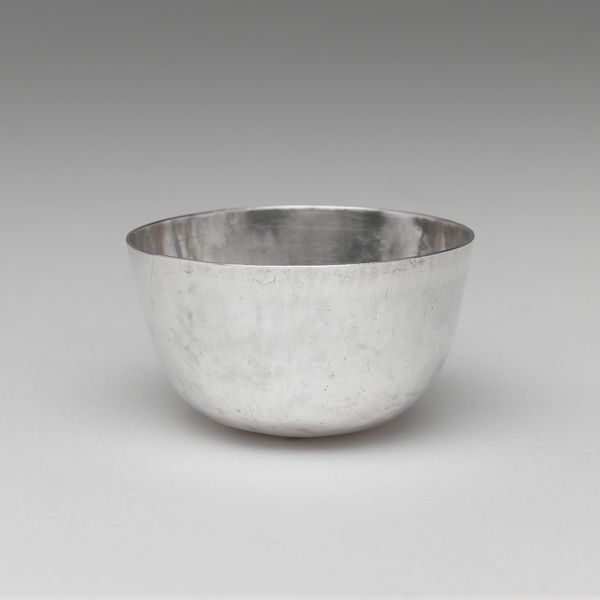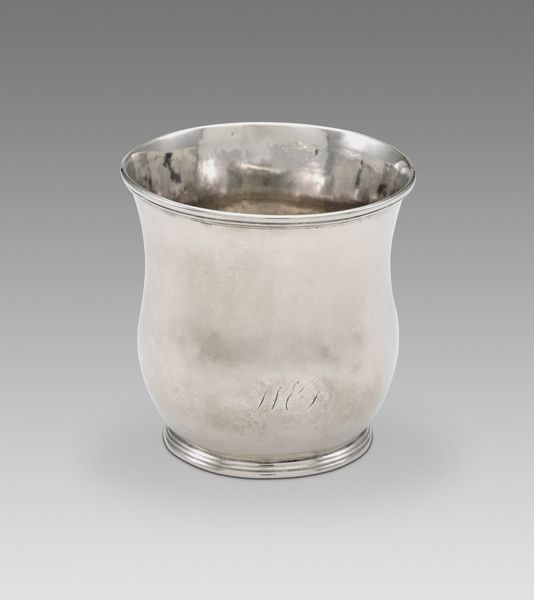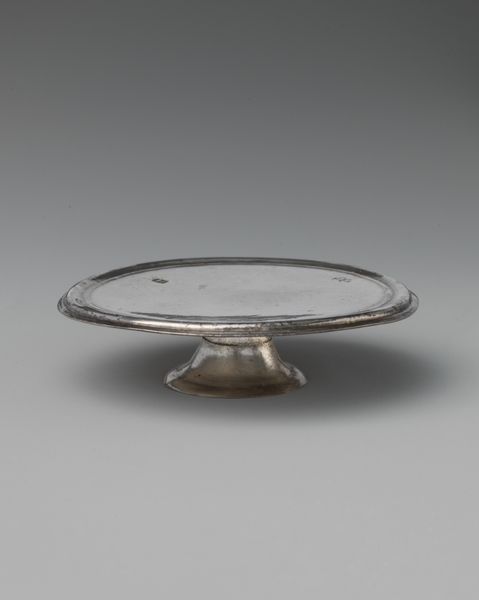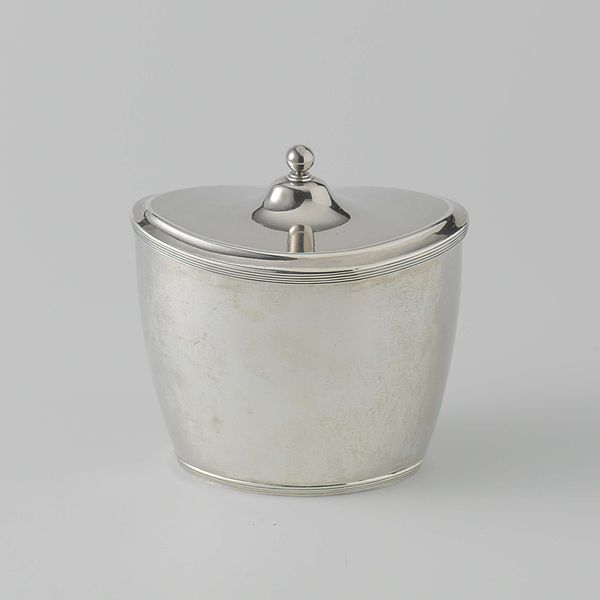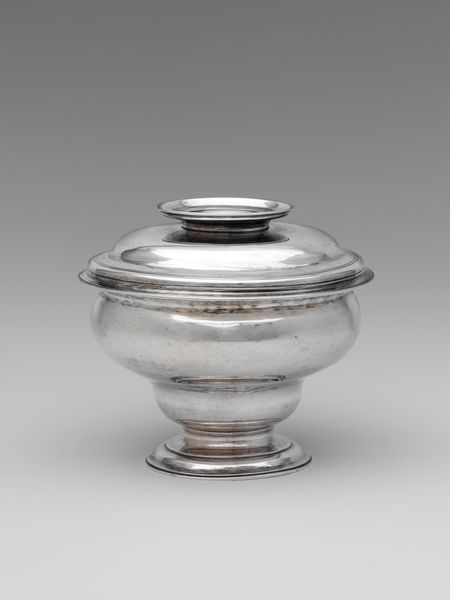
silver, metal
#
silver
#
baroque
#
metal
#
decorative-art
Dimensions: 1 3/8 x 3 7/16 x 2 3/4 in. (3.5 x 8.7 x 7 cm); 2 oz. 13 dwt. (82.5 g)
Copyright: Public Domain
Editor: Here we have John Coney's "Trencher Salt," crafted sometime between 1700 and 1720. It's a small, baroque-style piece made of silver, currently held at the Metropolitan Museum of Art. It seems so simple, yet there's a subtle elegance to its form. What can you tell me about this piece? Curator: This piece provides insight into the consumption habits of the elite during the early 18th century. Silver, as a material, was a marker of wealth and status. This simple object points towards a system of production where specialized silversmiths like John Coney catered to the demands of affluent consumers. How does examining the everyday use of this salt holder change our perspective on the period? Editor: It makes you think about the meals, doesn't it? All the hands involved, from the miners extracting the silver to the servants preparing the table... it wasn’t just *salt*. Does the craftsmanship suggest anything further about social status, like the specific techniques used? Curator: Absolutely. The level of detail, even in something as utilitarian as a salt holder, speaks to a society that valued refined craftsmanship. Silversmithing at this time involved specialized knowledge, apprenticeships, and a hierarchical workshop structure. Considering this, how might we see this object as representing the social dynamics of labor? Editor: So it is as much about the people who *made* the piece as about the people who used it? The object then, kind of contains social history within it? Curator: Precisely! It bridges the gap between high art and craft, making it an important resource for understanding class divisions and the material conditions that gave rise to decorative objects such as these. Considering its purpose, does this piece lead you to think about the colonial trade networks from that time? Editor: Yes! Suddenly, that silver implies so much: resources, labor, privilege...I hadn't thought of it that way before. Curator: Exactly. Seeing objects like this as products of material processes and social contexts makes history much more tangible. Editor: I'll definitely be thinking about labor and materials differently from now on!
Comments
No comments
Be the first to comment and join the conversation on the ultimate creative platform.
